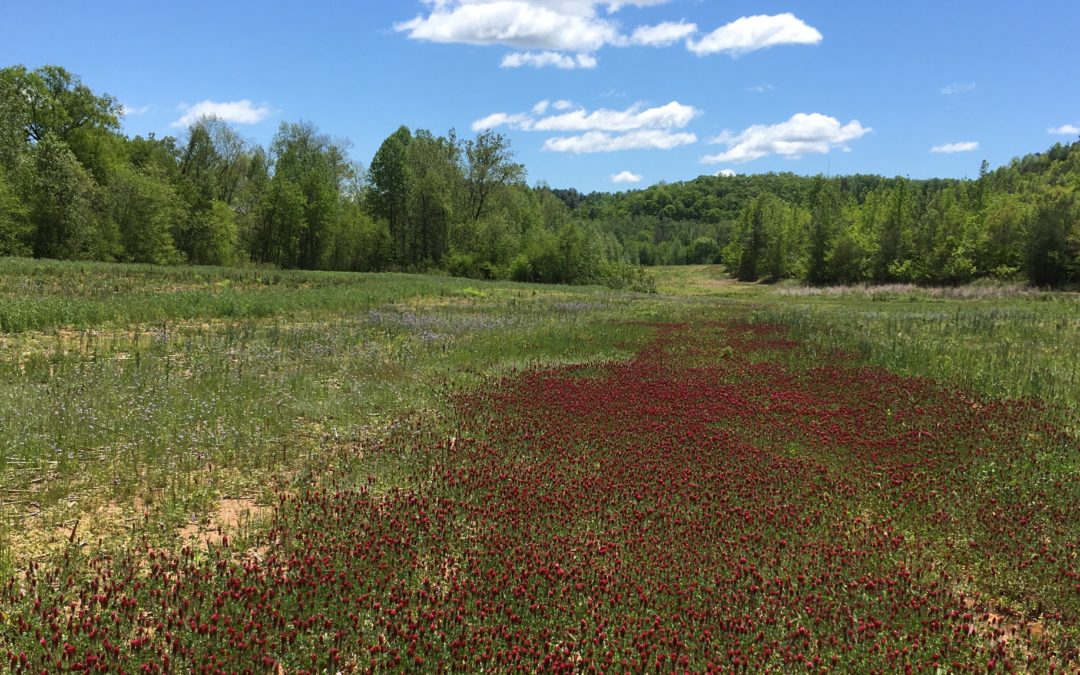This is the first in a series of five blogs that explore the 10,000 year history of human relationship to the land in the Piedmont region of North Carolina. Other blogs in this series include Indigenous Cultures of the Piedmont, European Colonization, Industrialization of the Piedmont, and The Piedmont’s Next Chapter.
A New Chapter at Catawba Run
A soft breeze is blowing as you walk into an open field of crimson clover on a beautiful May morning at Catawba Run. Moving deeper into the field, you see that the clover and grasses seem to form intentional rows and you notice the sweet dark smell of rich compost. Reaching down to touch the soft red flowers, you see that the grass stands at different heights and in some spots not at all.
The brilliant red flowers of the crimson clover becomes a common thread as you walk along the Pocket Garden Story line towards the river. At every new clearing, you notice the soil beneath the clover – hard, red, and still – but you begin to imagine how this soil will change in just a few years time – soft, dark crumbly and alive – after multiple years of clover and other soil restoring crops have been grown.
The call of a hawk catches your attention and you look up and over the landscape to the brilliant blue sky above, the browns and greens of the forest trees standing tall against the sky, and the brilliant reds and greens of the cover crops below and you realize that you are standing at the threshold of a new chapter in the long story of Catawba Run.
The story reaches back to the time when the first people visited the Piedmont forests to forage wild foods and continues to this day. It is a story of how the landscape shaped the lives of the people – those who were just passing through and those who decided to put down roots here.
It is also a story of how the people shaped the land— foraging for plant and animal foods, cultivating favored wild plants, using fire to maintain grasslands and open forests, clearing bottomlands for farm fields and homes, building railroads, highways, dams, power grids and water systems, and draining wetlands.
The clover fields and canebreaks, the old homestead and plowed fields, the short leaf and loblolly pine plantings, the bowl and remnant old growth forests at Catawba Run weave together the long story of the changing relationships between people and the land in the Piedmont of North Carolina.
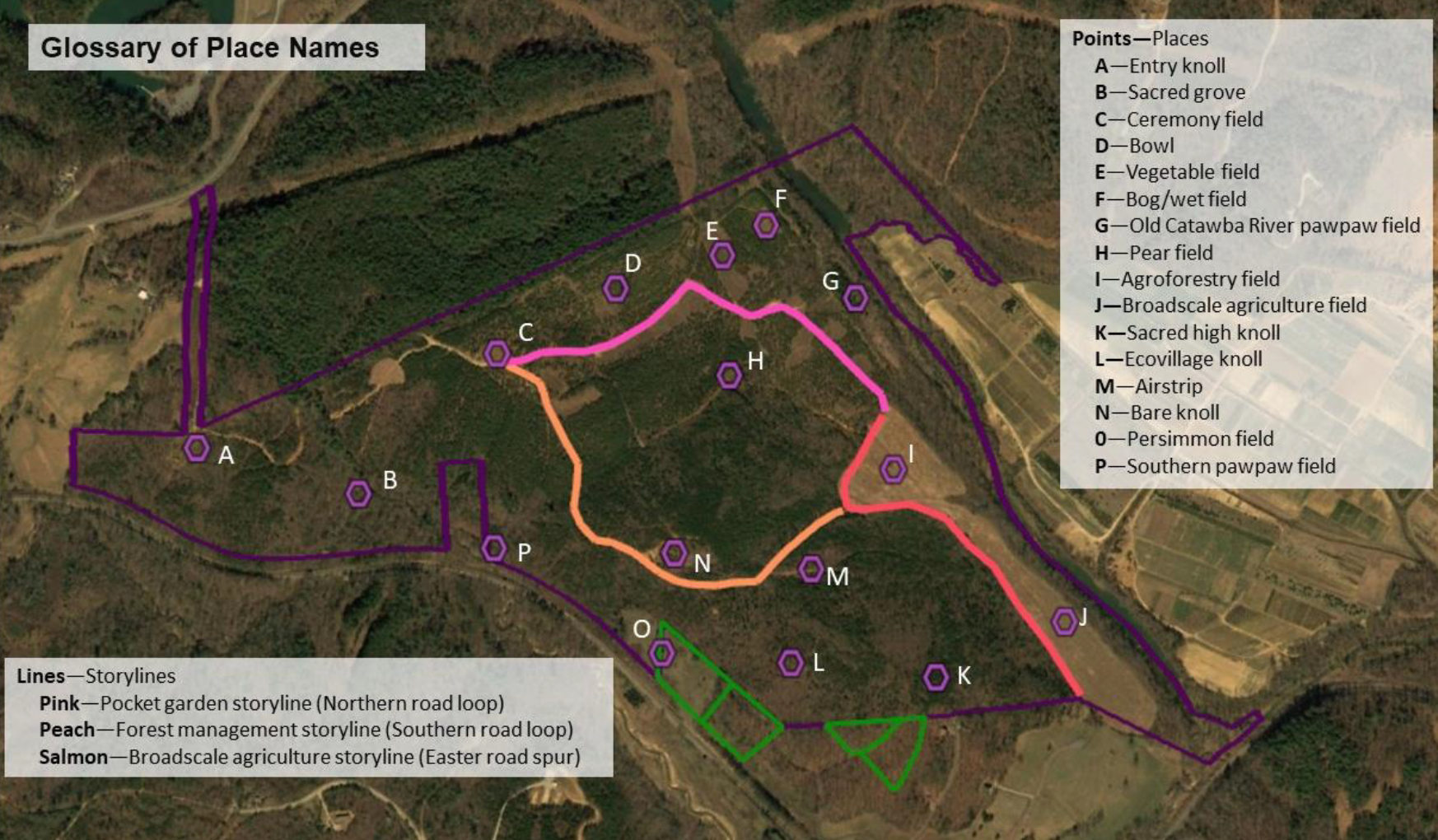
The Place Names and Storylines of Catawba Run
The Temperate Deciduous Forest Biome 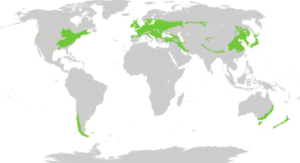
The Piedmont region of North Carolina is part of the great temperate deciduous forest that covers the eastern half of North America. Temperate deciduous forests are found all over the world in places with four distinct seasons, cold winters, warm summers and 30 to 60 inches of rainfall per year. These forests are dominated by mixed stands of oak, hickory and pine interrupted by isolated prairies and wetlands.
Through all of human history and all over the world, the temperature climate, high biodiversity and fertile soils of temperate deciduous forests have proven to be a favorite place for people to settle. It is a landscape remarkable for a great diversity of plants and animals.
Lichen, moss, ferns, wildflowers and other small plants can be found on the forest floor. Shrubs and smaller trees fill the middle level, or understory such as sassafras, hophornbeam, pawpaw, painted buckeye, blueberry, mapleleaf viburnum, huckleberry, and mountain laurel. Large trees like maple, birch, magnolia, sweet gum, beech, walnut and ash – along with oak, hickory and pine – complete the highest level, or forest canopy.
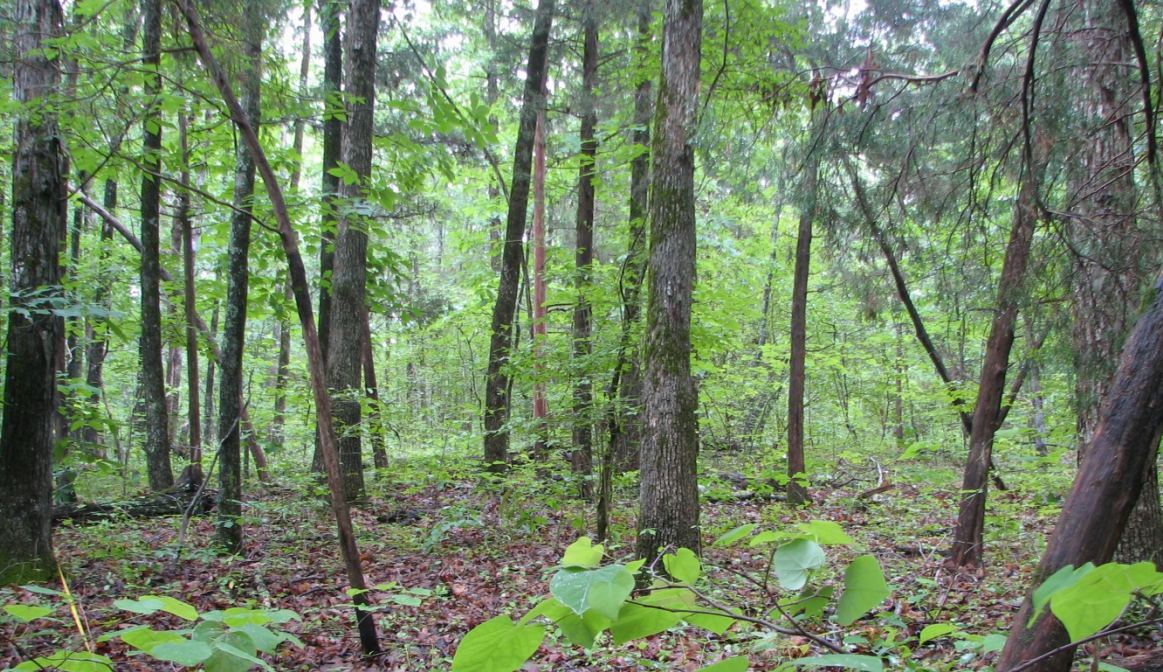
The People of the Forest
Wave upon wave of different peoples have been attracted the forests of the Piedmont over the last 10,000 years, each wave bringing a unique cultural legacy of relationship with the land and a multitude of hopes and dreams for the future. All of the people who have depended on these forests have something to teach us about how to live well in this place.
Indigenous peoples shaped this land for nearly all of this time, managing the forests with fire and cultivating crops in river bottoms to gather and grow the food, medicine, and materials needed to sustain their way of life.
About 400 years ago, Northern European colonists introduced a new land ethic and new crops, livestock, and technologies to the region. The colonists’ dependence on the labor of enslaved Africans introduced a third major cultural influence that helped to shape the land and the people of the Piedmont. In more recent times, immigrants from Southern Europe, Asia and Central and South America have brought new perspectives that continue to shape the culture of the region.
The great forests of the Piedmont have served the needs of many different peoples: as a place to worship, care for and depend upon for life, a place to call home, a place to exploit for financial gain, and a place to conserve for recreation. With the launch of Catawba Run, the land plays yet another role: a place for innovation, education, and spiritual renewal that inspires the transformation to a regenerative culture for the 21st century.
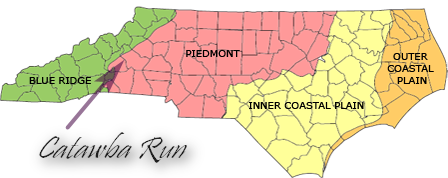
Catawba Run is 275 acres of old growth, unmanaged regrowth, and sustainable pine plantation located in the Piedmont region of North Carolina, near Nebo, just west of Morganton. This land is the setting for Foragable Community’s next demonstration of our shared values: to use ecological management practices and resilience principles to restore the health and wellbeing of degraded landscape, and concurrently have a positive impact on the lives of people who participate in this vision of redemption and renewal.
The Catawba Indian Nation are the descendants of the original inhabitants of land that we call Catawba Run. The Catawba, or “the people of the river” pronounced yeh is-WAH h’reh in their native tongue, were farmers, renowned potters, and stewards of the land in most of the Piedmont of South Carolina, North Carolina, and Southern Virginia. Foragable Community acknowledges that Catawba Run is on this ancestral land.

